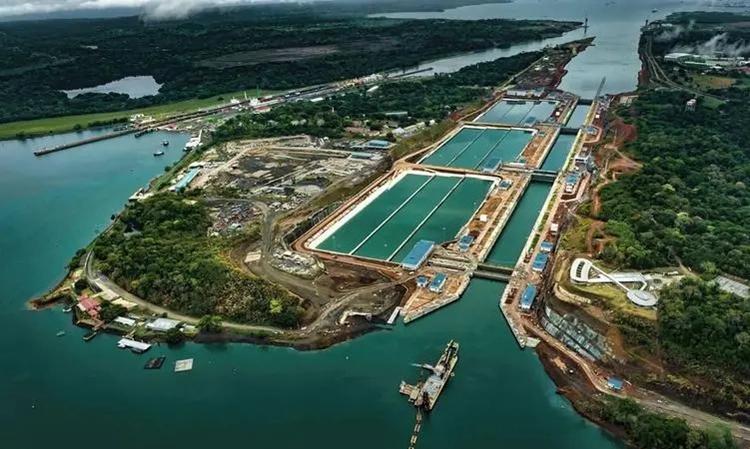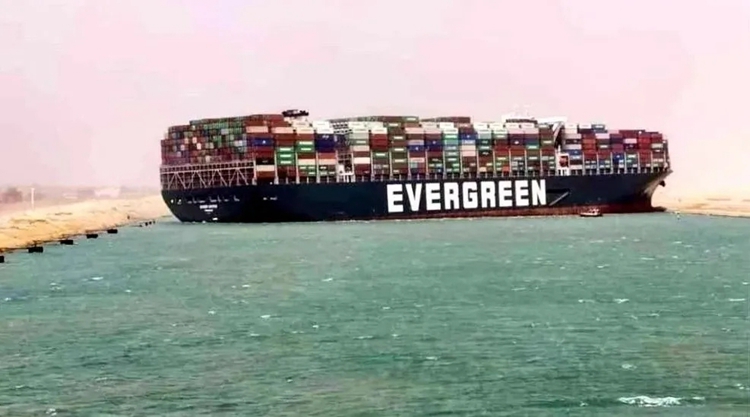According to an April 24 report in the Nihon Keizai Shimbun, the world shipping industry is facing a “simultaneous crisis”: ships around the world are unable to navigate through the two major canals that serve as the mainstay of international logistics. The Panama Canal in Central America is not expected to be completely free of navigation restrictions until 2025, as water shortages cannot be eliminated. Businesses have been forced to abandon the Suez Canal in Egypt due to the ongoing chaos in the Middle East. It is not yet possible to predict when normalization will take place.
The Panama Canal connects the Atlantic and Pacific Oceans. Since the control measures were initiated in 2023, ships have been waiting at the entrance to the canal for navigation, leading to frequent blockages. The reason for the restrictions on navigation is the lack of water in the lakes that supply water to the Panama Canal. While once upon a time, the lake's water level would drop due to a few decades of low rainfall, today it happens every three to five years due to the effects of climate change. Also contributing is the increase in domestic water use due to population growth around the lakes.
The Panama Canal is an important shipping route for transporting food and energy from the east coast of North America and the Gulf of Mexico to Asia. Following the Panama Canal's restriction of navigation, alternative routes reach Asia from North America via the Mediterranean Sea and the Suez Canal. However, in October 2023, the conflict between Israel and Hamas dealt a severe blow to the world's shipping industry, which relies on the “Suez Canal route”.

Since mid-December last year, there have been attacks on foreign merchant ships by the Houthi organization, and the world's shipping companies have been canceling their routes through the Suez Canal. The risk of an intensification of the conflict has increased, and there is still no prospect of resuming the route.
As a result of the simultaneous crises in the two major canals, most ships have been forced to detour around the Cape of Good Hope in Africa. This could lead to a shortage of cargo ships and a spike in transportation costs.
Freight rates for 40-foot containers on the route from Shanghai to the U.S. East Coast are $6,652, which is 2.9 times higher than at the end of November 2023. Supply chain disruptions during the New Crown outbreak led to 40-foot container freight rates that were once as high as about $12,000 USD. While freight rates are currently lower than the peak during the epidemic, the risk of poor maritime transportation is once again on the horizon.
According to UNCTAD statistics, more than 80% of world trade is realized through maritime transport. The advantage of maritime transportation is that the volume of a single shipment is higher than that of land and air transportation. As a low-cost and safe means of transportation, maritime transport has always contributed to the growth of the world economy.
Simultaneous crises in the major maritime arteries suggest that the world is shifting from an era of safe and free transportation of goods to a new normal of frequent disruptions.
Continued instability due to climate change and geopolitical risks is prone to upward pressure on transportation rates. Although freight rates are currently falling back, they are still higher than pre-epidemic levels.

According to McKinsey & Company, a US-based consulting firm, “Surveys show that there have been predictions that supply chain disruptions lasting more than a month will occur every 3.7 years. The frequency of disruptions is expected to become more frequent in the future, and it is necessary for companies to prepare for future crises.”
UNCTAD predicts that the average distance traveled by container ships and tankers will increase by 2% in 2024 compared to the previous year due to factors such as detours. If the sailing distance increases, the cost of fuel and the cost of employing people also increases. The shipping companies want shippers to bear the costs, but as transportation costs are passed on to commodity prices, they ultimately impact consumers as well.
High freight rates are also a risk factor for countries looking to curb inflation. According to an analysis by the International Monetary Fund, the deterioration of the situation in the Middle East has led to a 15 per cent increase in the price of oil, and container ship freight rates will increase to 2.5 times their original level between 2024 and 2025.

